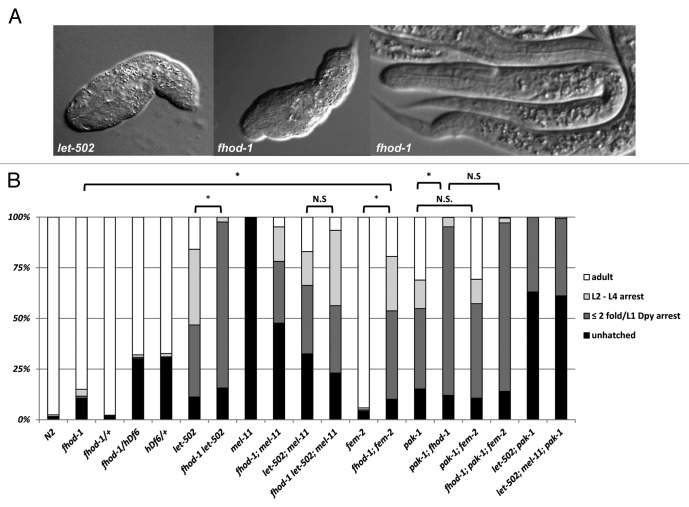Figure 3.fhod-1 phenotypes and genetic interactions. (A) A low percentage of fhod-1 embryos arrest with limited elongation similar to that seen with the strong dominant-negative allele of let-502(ca201) but most fhod-1 embryos hatch into normal L1 larvae. Note that these elongation-arrested larvae have differentiated gut and pharynx and so did not simply die during elongation. The let-502(sb118) allele used in part (B) is hypomorphic (see Materials and Methods) and arrests slightly later (≥ 2-fold). (B) Distribution of elongation phenotypes seen for indicated mutant backgrounds. See text for interpretations and Materials and Methods for alleles. Animals with ≤ 2-fold arrest are combined with the ≥ 2-fold L1 arrest that were also Dpy and lumpy (“≤ 2 fold/L1 Dpy”). n > 400 for each genotype and all experiments were done at 25°C. Statistical tests were performed by pooling those categories corresponding to the strongest elongation defects, namely unhatched embryos (most of which arrested during morphogenesis) plus hatched and arrested at ≤ 2-fold/L1 Dpy. For the differences indicated as significant (*), p < 10−5, while for those indicated as not significant (n.s.), p > 0.05 (see Materials and Methods).

An official website of the United States government
Here's how you know
Official websites use .gov
A
.gov website belongs to an official
government organization in the United States.
Secure .gov websites use HTTPS
A lock (
) or https:// means you've safely
connected to the .gov website. Share sensitive
information only on official, secure websites.
